Irish Terrier Vs. Airedale Terrier: What Makes Them Different?
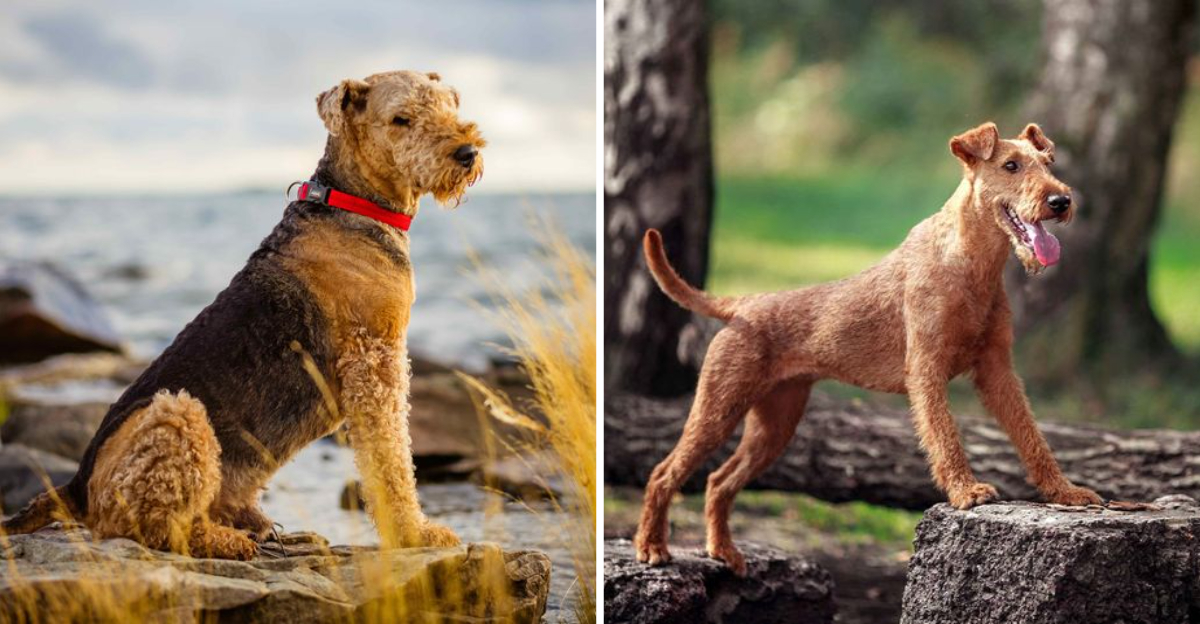
Terriers are beloved dogs known for their spunky personalities and loyal nature. Two popular breeds – the Irish Terrier and the Airedale Terrier – often confuse new dog owners because of their similar temperaments and appearances.
While both originated as working dogs with strong hunting instincts, they have distinct characteristics that set them apart.
Understanding these differences can help you choose the perfect furry companion for your lifestyle.
1. Size Matters

Standing tall and proud, the Airedale Terrier holds the title of largest terrier breed. Adult Airedales typically weigh between 50-70 pounds and stand 23 inches at the shoulder – earning them the nickname “King of Terriers.”
Irish Terriers are considerably smaller, weighing just 25-27 pounds and reaching about 18 inches in height. This significant size difference affects everything from their living space requirements to exercise needs.
For apartment dwellers or those with limited space, the more compact Irish Terrier might be the better choice, while those wanting a more substantial terrier often prefer the Airedale.
2. Coat Colors And Textures

Running your fingers through an Irish Terrier’s coat, you’ll feel a distinctive wiry texture in a gorgeous solid red-golden color. These “red devils” sport a uniform coat that ranges from bright red to reddish-wheaten, giving them their fiery appearance.
Airedale Terriers showcase a two-tone coat pattern with a tan body and distinctive black saddle marking on their back. Their dense, hard topcoat protects a softer undercoat, creating a more complex coat structure than their Irish cousins.
Both breeds have non-shedding, hypoallergenic coats that require regular professional grooming to maintain their characteristic terrier look.
3. Historical Backgrounds
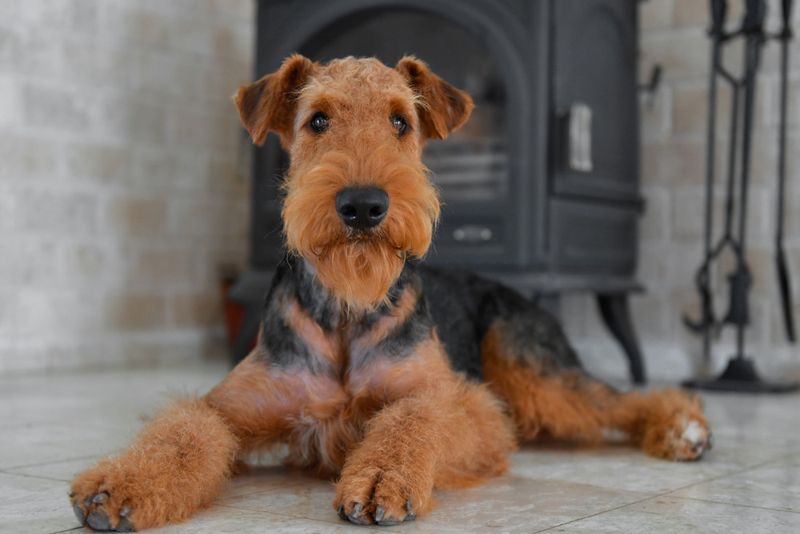
Born in the emerald hills of Ireland, the Irish Terrier ranks among the oldest terrier breeds. These dogs served as versatile farm dogs, ratters, and loyal companions for Irish families since the 1800s. Their courage during World War I, serving as messenger dogs, cemented their reputation for bravery.
Airedale Terriers emerged from Yorkshire, England’s Aire Valley in the mid-19th century. Originally bred by factory workers for hunting otters and rats along the river, they’re a crossbreed of the old English Black and Tan Terrier with the Otterhound.
Both breeds evolved from working-class roots but developed in different geographical regions for slightly different purposes.
4. Energy Levels And Exercise Needs

Bouncing with seemingly endless energy, Irish Terriers need vigorous daily exercise to stay happy. Their smaller size belies their stamina – these dogs can go all day! Plan for at least 60 minutes of active play, walks, or running daily to keep them mentally and physically satisfied.
Airedales possess a more moderate energy level that comes in bursts. They enjoy intense play sessions followed by relaxation periods. Their larger frame requires about the same amount of exercise time but at a somewhat lower intensity.
Both breeds thrive with yard space to explore, though the Irish Terrier’s more persistent energy makes them slightly more challenging for first-time owners.
5. Personality Traits

Fiery and spirited, Irish Terriers embody their nickname “daredevils” with remarkable courage packed into their medium frames. They form intense bonds with their families and show endless loyalty, sometimes to the point of being overly protective. Their personalities tend toward the more intense end of the terrier spectrum.
Airedale Terriers carry themselves with a confident, dignified air that’s earned them the reputation of being more laid-back among terriers. Their playful side balances with an independent streak and somewhat calmer demeanor.
Both breeds share classic terrier determination, but the Irish Terrier typically displays more intensity in both work and play.
6. Trainability Differences
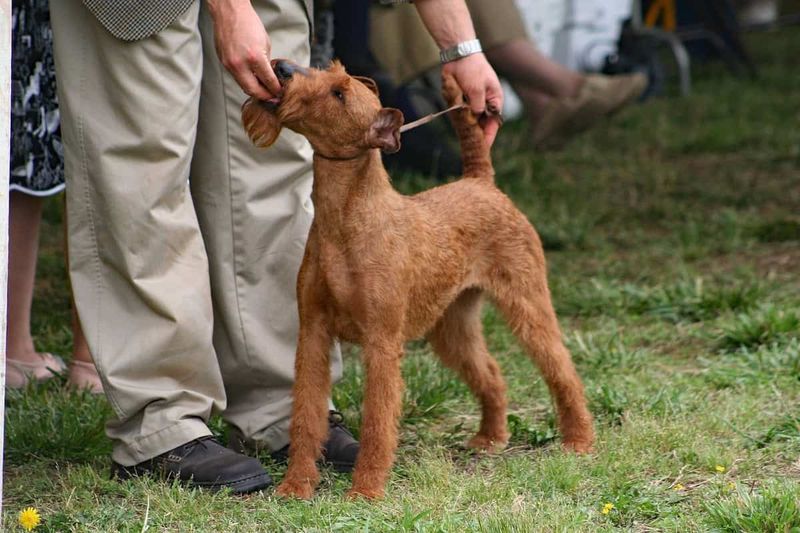
Quick-witted and eager to please, Irish Terriers respond well to positive reinforcement training with a consistent hand. Their intelligence means they learn commands rapidly, though their independent streak occasionally surfaces as stubbornness during training sessions.
Airedale Terriers bring a thoughtful approach to training, often pausing to consider whether your request is worth their effort! This independent thinking made them excellent military and police dogs historically.
Both breeds benefit from early socialization and training that starts in puppyhood. The Irish Terrier generally shows more immediate responsiveness, while the Airedale’s intelligence manifests as a more deliberate, problem-solving approach to learning.
7. Family Compatibility
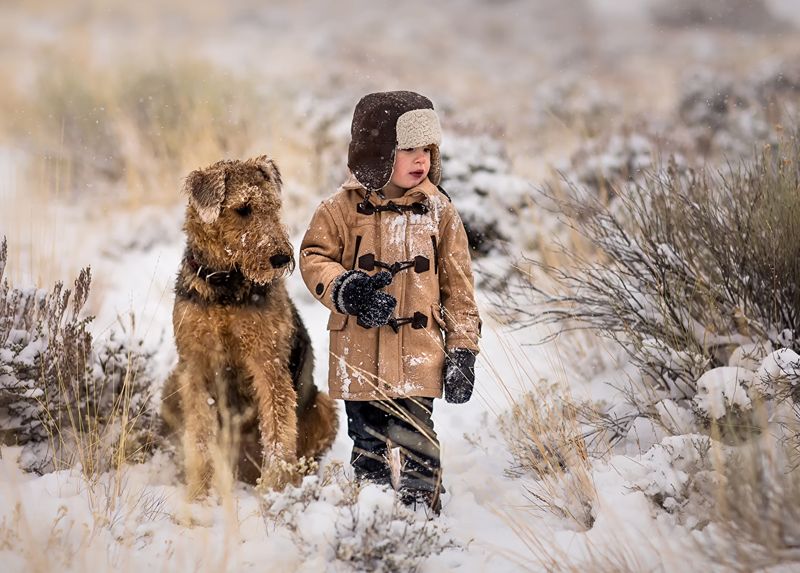
Naturally protective of children, Irish Terriers make wonderful family dogs with their playful spirit and boundless energy. Their medium size means they’re substantial enough to handle rough play but not so large they might accidentally knock over small children.
Airedale Terriers bring patience and gentleness that surprises many given their larger size. Their calm demeanor makes them excellent with kids, though their strength means supervision is important with toddlers.
Both breeds form strong bonds with family members and can be somewhat reserved with strangers – a trait that makes them good watchdogs. The Irish Terrier tends to be slightly more vocal about potential threats compared to the more measured Airedale.
8. Health Considerations
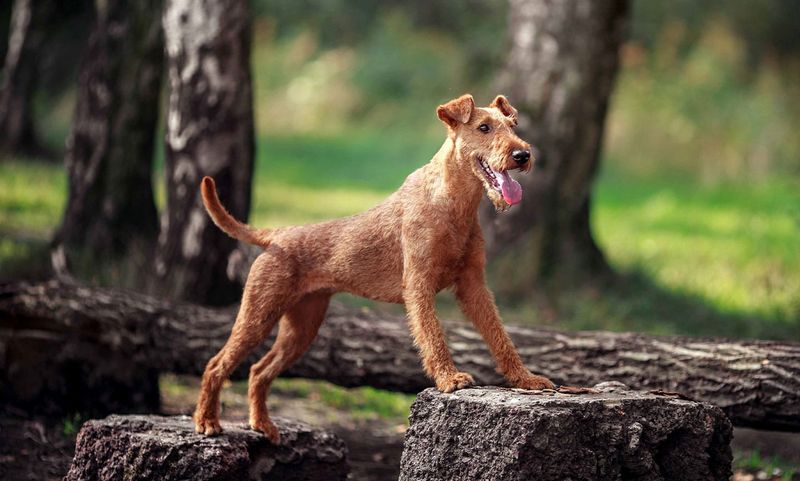
Blessed with robust health overall, Irish Terriers typically enjoy lifespans of 13-15 years. Their main health concerns include hypothyroidism and cystinuria (a bladder stone condition). Their hardy constitution comes from centuries of development as working farm dogs in Ireland’s challenging climate.
Airedale Terriers generally live 10-13 years and face some breed-specific health challenges. Hip dysplasia becomes more common due to their larger size, and they have higher rates of certain cancers and heart issues than their Irish cousins.
Both breeds benefit from regular veterinary care, but the Airedale’s larger size and slightly more complex health profile typically results in higher lifetime veterinary costs.
9. Grooming Requirements
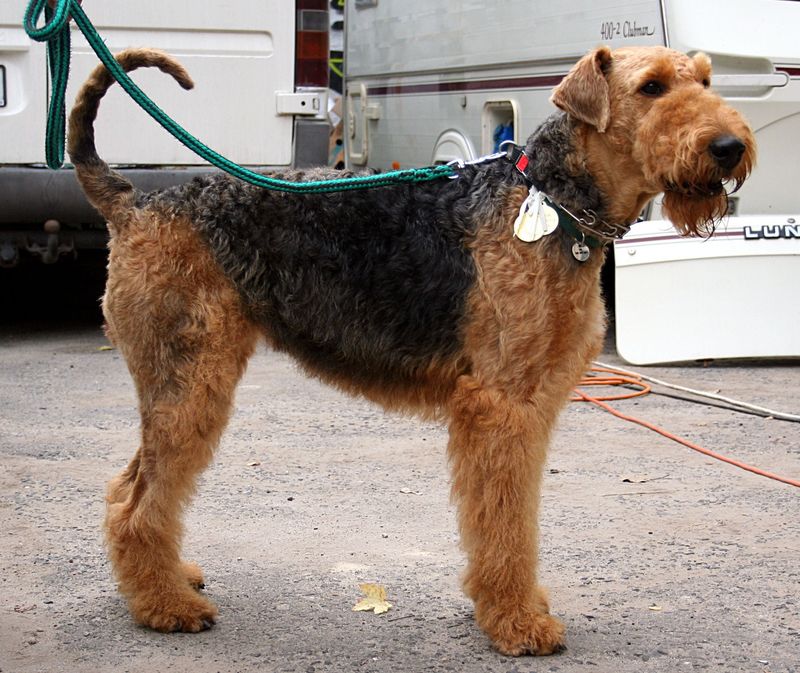
Sporting their signature beards and eyebrows, both terriers require similar grooming routines with some key differences. Irish Terriers need hand-stripping (plucking dead hair) every 6-8 weeks to maintain their bright red coat color and texture. Daily brushing prevents matting, especially around their distinctive facial furnishings.
Airedale Terriers demand slightly more intensive grooming due to their dual-layer coat. Professional grooming every 8-10 weeks keeps them looking sharp, with particular attention needed for their saddle pattern.
Neither breed sheds significantly, making both good choices for allergy sufferers, though their wiry coats collect debris during outdoor adventures.
10. Barking And Vocalization

Alert barkers with distinctive voices, Irish Terriers won’t hesitate to announce visitors, squirrels, or suspicious leaves blowing across the yard! Their vocal nature makes them excellent watchdogs but can challenge apartment dwellers or those with noise-sensitive neighbors.
Airedale Terriers show more restraint in their barking habits. When they do bark, it tends to be for more significant reasons – their deeper, more substantial bark carries authority and purpose.
Both breeds can be trained to limit excessive barking, but the Irish Terrier naturally tends toward more frequent vocalization compared to the somewhat more reserved Airedale.
11. Prey Drive Intensity
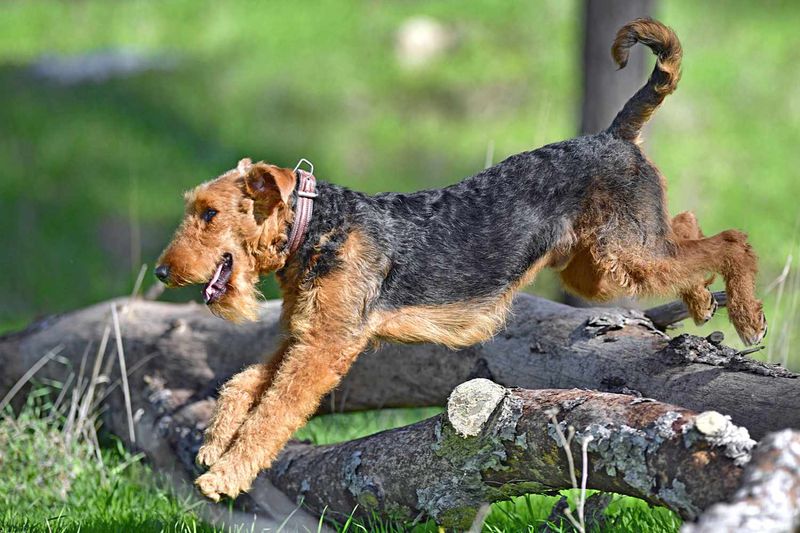
Lightning-quick and laser-focused, Irish Terriers possess an intense prey drive that sends them chasing after anything small and fast-moving. Their history as ratters and vermin hunters makes them challenging to recall once they’ve spotted potential prey – squirrels beware!
Airedale Terriers combine terrier prey drive with hound tracking abilities from their Otterhound ancestry. This creates a more methodical hunting style compared to the Irish Terrier’s immediate chase response.
Both breeds require secure fencing and leash discipline during walks, but the Irish Terrier typically shows more immediate reactivity to small animals, while the Airedale might track scents with more persistence.
12. Cost Of Ownership

Purchasing a purebred Irish Terrier puppy from a reputable breeder typically costs between $1,200-$1,800. Their smaller size means lower food costs – about $30-$40 monthly for quality dog food. Their overall yearly expenses average $1,000-$1,500 including routine veterinary care.
Airedale Terriers command higher initial prices, usually $1,800-$2,500 from responsible breeders. Their larger size increases food costs to $50-$70 monthly, and professional grooming runs slightly higher due to their more complex coat.
Both breeds require similar investments in training, toys, and basic supplies, but the Airedale’s larger size and slightly shorter lifespan create different long-term cost considerations.






